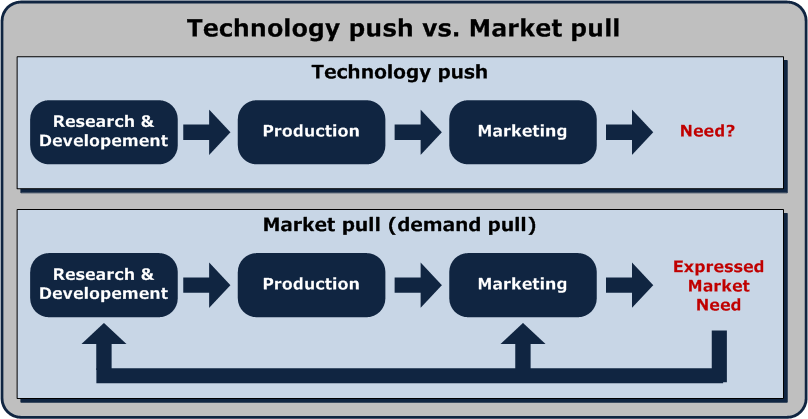
Push Campaign
A “Push Strategy” is a promotional strategy that is direct and using sales people, advertising, or direct marketing. With a push strategy, the seller tries to directly create consumer demand for a transaction. A simple example is email campaigns that notify customers of promotions. This is usually less expensive than a pull strategy, but the weakness of the push method is that customers may not be interested in the product and resources could easily be wasted.
Pull Campaign
Alternatively, a “Pull Strategy” tries to create consumer demand through indirect means, such as brand and loyalty promotion. The idea is that consumers will be aware of the product and ask their retailers for it. An good example is in the music industry. Previously, demand was a push model. LPs and CDs were sold through retail stores, with direct advertising and record label were responsible for creating consumer demand. Now with streaming, social media and the dominance of digital music, control has shifted to the consumer and artists and now a “pull strategy” is needed.
So, in either case, marketers try to increase consumer demand, by:
- Pushing, and informing customers about features and benefits to create new market demand, or
- Pulling, shaping and steering existing customer demand to your brand.
Supply Chain – A Slightly Different Meaning
An alternate meaning for “Push” is in multi-channel distribution. In that case, “Push” means marketing to the next level of the supply chain. The Manufacturer markets to the Wholesaler who in turn markets to the consumer. “Pull” is when the Manufacturer markets directly to the customer in order to pull sales through the supply chain via the Wholesaler.
Mobile Marketing – What another meaning?
OK, one more. In mobile text campaigns, “Push” and “Pull” refer to who sends the first text message to the marketer’s short code. In a “Push” campaign, Sellers usually have a database that customers have opted in to, and send them periodic texts offering discounts, informing them of product releases, etc. A “Pull” campaign relies on other media or word of mouth to get customers to text in first. For example, a radio station has a contest that requires texting in or a billboard suggests a keyword to text.

